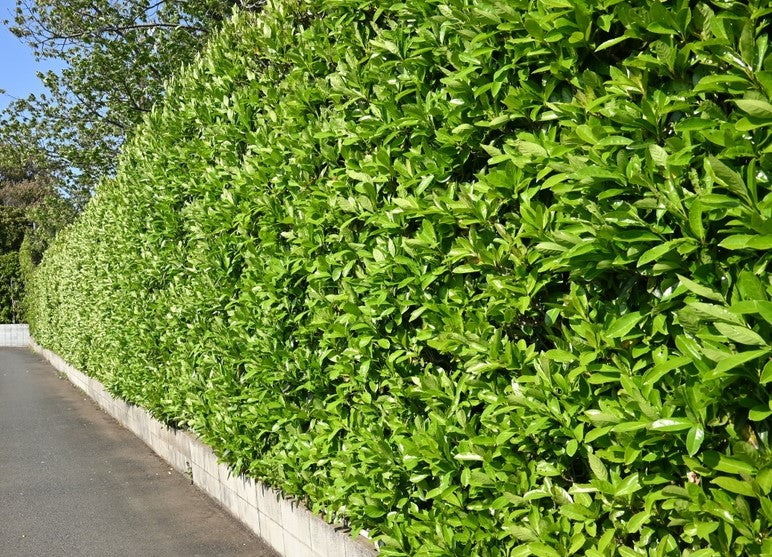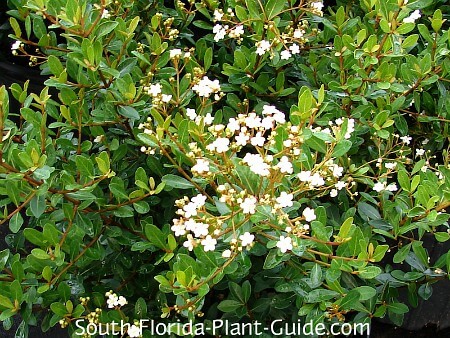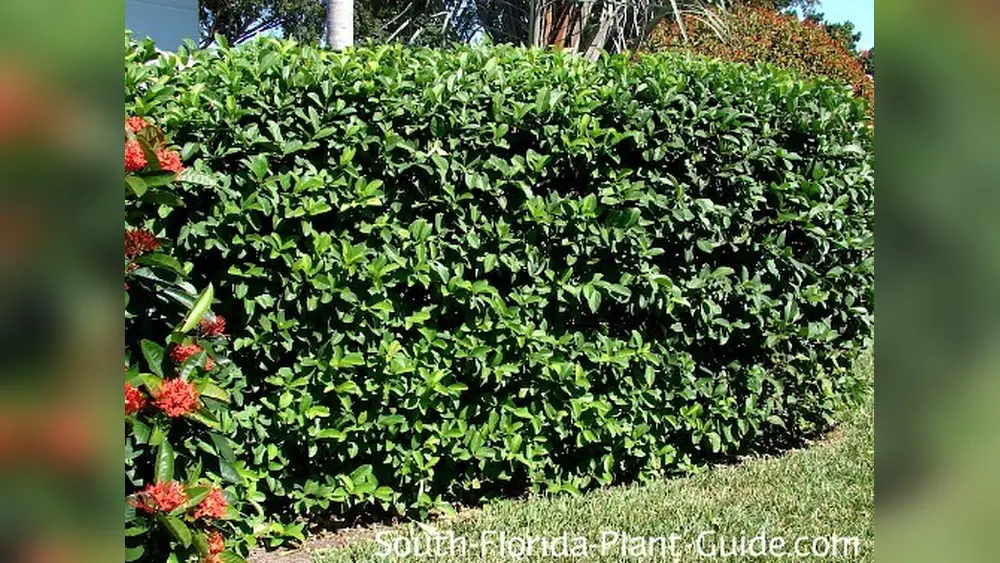If you’re looking to add beautiful, hardy greenery to your Florida garden, viburnum is a fantastic choice. But when is the best time to plant viburnum in Florida to ensure it thrives?
Timing can make all the difference between a struggling shrub and a lush, vibrant addition to your landscape. Whether you’re a seasoned gardener or just starting out, knowing the ideal planting season will help you give your viburnum the strongest start possible.
Keep reading to discover the perfect window for planting viburnum in Florida and tips to help your plants flourish year-round.

Credit: plantittampabay.com
Best Seasons For Viburnum
Choosing the best season to plant viburnum in Florida can impact the shrub’s growth and health. Florida’s climate allows some flexibility, but knowing the right time helps ensure strong roots and vibrant blooms. Viburnum adapts well to different seasons, but spring and fall offer key benefits. Understanding these seasons helps gardeners plan for success and enjoy beautiful shrubs year after year.
Spring Planting Benefits
Spring is a popular time to plant viburnum in Florida. The soil warms up, encouraging root growth. This season allows the plant to establish before summer heat arrives. Viburnum planted in spring often shows faster growth and earlier flowering. Gardeners can enjoy fresh blooms and lush foliage by summer. Spring planting also helps avoid frost damage, common in early months.
Advantages Of Fall Planting
Fall is another excellent season for viburnum planting. Cooler temperatures reduce stress on new plants. The shrub can focus on root development during fall and winter. This results in stronger roots ready to support growth in spring. Fall planting helps the shrub survive Florida’s hot summers better. Water needs are lower, making maintenance easier during this season.
Year-round Planting In Florida
Florida’s mild climate allows viburnum planting almost all year. Gardeners have flexibility to plant outside spring and fall. Winter and summer plantings are possible with extra care. Providing shade and adequate water helps plants in hotter months. Choosing the right viburnum variety can improve success year-round. Monitoring soil moisture and weather protects plants from extreme conditions.
Choosing The Perfect Spot
Choosing the perfect spot for planting viburnum in Florida is key to its healthy growth. Viburnums thrive when placed in a location that meets their sunlight, soil, and drainage needs. Picking the right spot helps the shrub develop strong roots and vibrant foliage.
Consider your garden’s conditions carefully. This ensures your viburnum will flourish through Florida’s warm climate and occasional heavy rains. A well-chosen site reduces stress on the plant and lowers maintenance efforts.
Sunlight Requirements
Viburnum plants prefer full sun to partial shade. They need at least 4 to 6 hours of direct sunlight daily. Morning sun with afternoon shade is ideal in hotter parts of Florida. Too much shade can cause poor flowering and sparse leaves. Choose a spot that balances sun and shade for best results.
Soil Preferences
Viburnums grow best in rich, fertile soil. The soil should have plenty of organic matter. Adding compost improves soil texture and nutrients. Slightly acidic to neutral soil pH, between 5.5 and 7.0, is perfect. Avoid heavy clay soils unless amended well. Test your soil first and adjust as needed.
Drainage And Soil Preparation
Good drainage is crucial for viburnum health. Standing water can cause root rot and other problems. Choose a spot where water drains away quickly. If drainage is poor, raise the planting bed or add sand and organic material. Loosen the soil deeply before planting. This helps roots spread and access air and nutrients.
Planting Techniques
Planting viburnum correctly ensures healthy growth and vibrant blooms. Use proper techniques to help the shrub settle well in Florida’s climate. Careful handling and preparation boost its chances to thrive.
Proper Hole Dimensions
Dig a hole as deep as the root ball. Make it two to three times wider than the root ball. This gives roots space to spread easily. Loose soil around the hole helps water drain well.
Handling The Root Ball
Handle the root ball gently to avoid damage. If roots are tightly packed, loosen them lightly. Remove any broken or dead roots before planting. Keep the root ball moist until planting.
Spacing Tips
Space viburnum plants at least 3 to 5 feet apart. Proper spacing avoids overcrowding and allows air circulation. Good airflow reduces disease risk and helps the plant grow strong.

Credit: www.south-florida-plant-guide.com
Watering And Mulching
Proper watering and mulching play key roles in growing healthy viburnum plants in Florida. These practices help the shrub establish roots and protect it from Florida’s changing weather. Correct watering ensures the roots get enough moisture without drowning them. Mulching keeps the soil cool and holds moisture. Both steps reduce stress on the plant during heat or dry spells.
Initial Watering Guidelines
Right after planting, water the viburnum deeply. Soak the soil to about 6 inches down. This helps the roots settle into the soil. Water slowly to avoid runoff. Check the soil moisture every day for the first week. Keep the soil moist but not soggy. Avoid letting the soil dry out completely.
Mulch Application Benefits
Apply a 2-inch layer of organic mulch around the base. Mulch stops weed growth and keeps roots cool. It also holds water in the soil longer. Use pine bark, wood chips, or shredded leaves. Keep mulch a few inches away from the stem. This prevents rot and pest problems. Mulching reduces the need for frequent watering.
Ongoing Watering Schedule
Water viburnum plants once or twice a week after the first month. Increase frequency during very hot or dry weather. Water early in the morning or late in the evening. This limits water loss due to evaporation. Always check soil moisture before watering. Adjust watering if the soil feels damp or wet.
Seasonal Care Tips
Seasonal care is key to growing healthy viburnum in Florida. Each season demands specific actions to keep your plants thriving. Proper maintenance helps viburnum adapt to Florida’s unique climate. Follow these simple tips to protect and nourish your shrubs year-round.
Fall Maintenance Practices
Fall is a great time to care for viburnum in Florida. Remove dead or damaged branches to promote growth. Apply a balanced fertilizer to support root development. Mulch around the base to keep soil moist and regulate temperature. Water deeply during dry spells to help roots absorb nutrients. Check for pests and treat early to avoid infestations.
Preparing For Summer Heat
Florida summers can stress viburnum plants. Increase watering frequency to keep soil consistently moist. Mulch helps retain soil moisture and cools the roots. Prune lightly to improve air circulation and reduce leaf scorch. Avoid heavy fertilizing in summer to prevent new growth damage. Shade young plants during peak afternoon sun for protection.
Winter Protection Strategies
Though Florida winters are mild, viburnum still needs care. Cover plants with frost cloth on cold nights to prevent damage. Reduce watering but do not let soil dry out completely. Remove mulch in early spring to avoid root rot. Inspect plants for any winter injury and prune damaged branches. Keep an eye on pests that can survive mild winters.
Growth And Development
Understanding the growth and development of viburnum in Florida helps in proper care. Viburnum adapts well to Florida’s warm climate and sandy soils. With the right planting time, these shrubs establish strong roots and grow steadily. Healthy growth depends on soil, water, and sun exposure.
Watching your viburnum grow ensures it stays vibrant and blooms beautifully. This section explains what to expect and how to keep your plant healthy.
Expected Growth Rate In Florida
Viburnum grows moderately fast in Florida’s climate. You can expect about 1 to 2 feet of growth per year. Young plants focus on root development first. After roots establish, top growth speeds up. Full maturity usually takes 3 to 5 years. Growth can slow during the hottest summer months. Regular watering and mulch help maintain steady growth.
Signs Of Healthy Growth
Healthy viburnum has bright green leaves without spots or yellowing. New shoots and leaves appear each season. Flower buds form before blooming in spring or fall. The stems look firm and strong. Leaves feel smooth and not dry or brittle. Good growth shows the plant handles Florida’s heat and humidity well.
Troubleshooting Common Issues
Yellowing leaves may indicate overwatering or poor drainage. Wilting leaves often mean the plant needs more water. Brown leaf edges suggest dry air or sunburn. Pests like aphids or scale insects can affect growth. Check leaves regularly and treat pests early. Using well-drained soil and mulch reduces root problems. Address issues quickly to keep viburnum healthy.
Expert Planting Timeline
Understanding the expert planting timeline for viburnum in Florida helps ensure strong growth. Timing plays a key role in the shrub’s health and bloom quality. Choosing the right planting period allows roots to establish before facing weather challenges.
Florida’s climate varies, so careful planning improves success. Follow these guidelines to pick the best time to plant viburnum and maximize its potential.
Ideal Months For Planting
Plant viburnum during early spring or early fall for best results. March to May and September to November offer mild temperatures. These months help roots grow without stress from heat or cold. Planting during these times encourages strong establishment before summer or winter.
Avoiding Extreme Weather
Do not plant viburnum in the peak heat of summer or coldest winter days. Extreme heat can dry out young plants quickly. Frost or freezing temperatures can damage roots and slow growth. Planting outside these extremes reduces risk and supports healthy development.
Adjusting For Microclimates
Florida has areas with different temperature and humidity patterns. Coastal zones may warm earlier in spring but stay cooler in fall. Inland areas can have hotter summers and cooler winters. Adjust planting time based on your specific location’s weather trends. This careful adjustment helps viburnum thrive wherever you plant it.

Credit: www.wilsonbrosgardens.com
Frequently Asked Questions
Can You Plant Viburnum In The Fall?
Yes, you can plant viburnum in fall. Early fall planting helps roots establish before winter freezes. Choose well-draining soil and water regularly. Mulch to retain moisture and protect roots. Fall planting reduces heat stress and promotes healthy growth.
How Fast Do Viburnums Grow In Florida?
Viburnums in Florida grow moderately fast, typically 12 to 24 inches per year. Growth depends on variety, soil, and care.
What Is The Best Month To Plant In Florida?
The best months to plant in Florida are spring and early fall. These seasons offer optimal temperatures for root growth and plant establishment.
Is October Too Late To Plant Shrubs?
October is not too late to plant shrubs. Fall’s cooler temperatures help roots establish before winter. Plant at least six weeks before ground freezes for best results.
Conclusion
Planting viburnum in Florida thrives best during early fall or spring. These seasons help roots grow strong before harsh weather arrives. Choose a sunny or partly shaded spot with good soil. Water your plant well and add mulch to keep moisture.
Regular care during dry times supports healthy growth. Following these simple steps ensures vibrant, flourishing viburnum shrubs. Start planting at the right time and watch your garden bloom beautifully.

